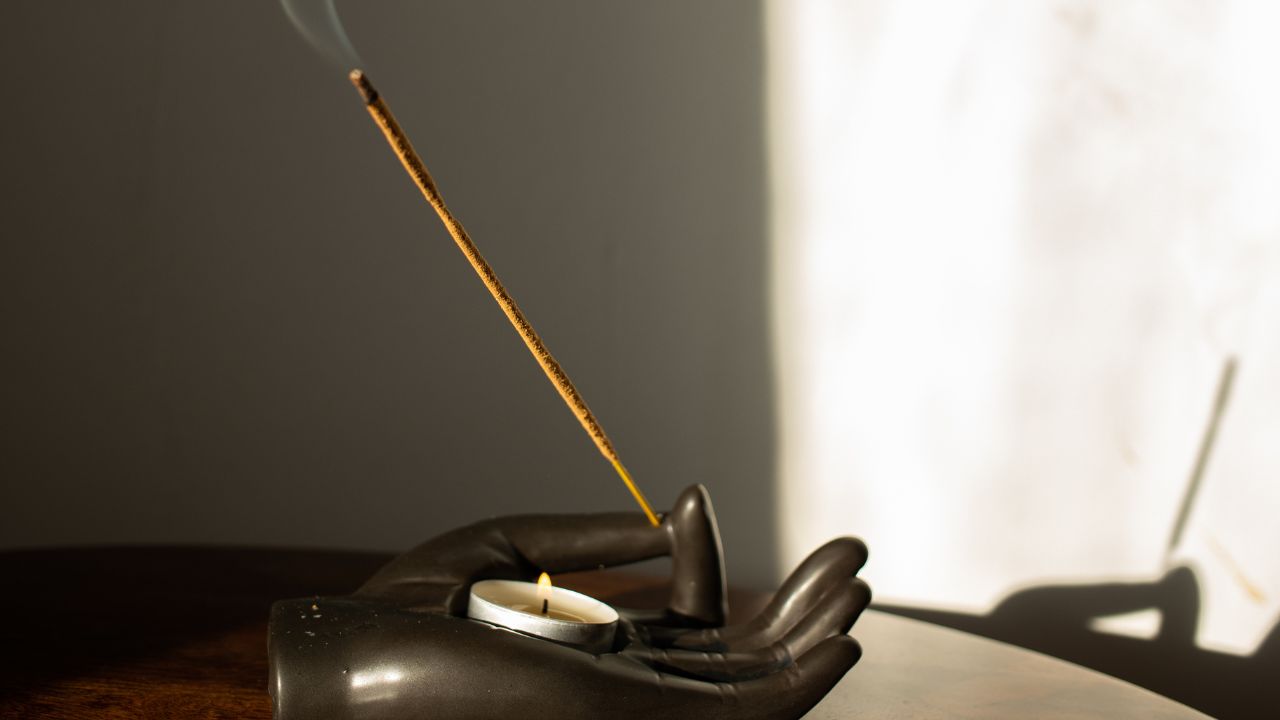Incense is a religious tool. People use it for spiritual practices, meditation sessions, and relaxation. Proper incense lighting is very important, requiring both safety precautions and correct execution. This article explains how to light an incense properly to enhance the experience.
Preparing the Incense Holder
Every incense practice requires a holder or burner because it functions as a safety device to collect ash. Incense sticks need a small hole holder to maintain their upright position, yet cones require a heat-resistant dish or burner to catch their ash. Specialized burners are needed to achieve even coil burning since these incense types need to be molded for long durations. The holder needs to sit on a level non-burning surface, which must maintain a safe distance from flammable items, including curtains, paper, and furniture. When positioned correctly, the burn remains consistent, and accidents are avoided.
Lighting the Incense
A flame source consisting of either a match or lighter serves as the necessary tool for proper incense ignition. Letting the incense tip remain in the fire for several seconds enables it to start burning. Once the tip ignites, it requires a five to ten-second burn before you should gently blow out the flame. The ember glows after the incense leaves behind it while producing aromatic smoke. Proper incense smoldering requires multiple attempts at relighting the incense and repeating the procedure. It is essential to monitor incense at all times during its burning process.
Ensuring an Even Burn
The incense should produce continuous smoke without creating noticeable soot or unpleasant odors after lighting it. The incense burns improperly when it stops too early, either because of inadequate lighting or excessive environmental moisture. A weak ember can be strengthened by gentle fan motion to preserve the burning process. The proper distribution of incense fragrance through good air circulation can be achieved by placing the incense in well-ventilated areas. Strong drafts should be prevented because they create uneven burning or premature extinguishing of the incense.
Practicing Safety and Mindfulness
People should exercise care when burning incense to achieve both safety and enjoyment. Incense should never be burned inside spaces without proper ventilation because excessive smoke buildup occurs. Incense must always stay away from open windows because wind currents could send burning embers to catch fire on flammable materials. Users should wait until the entire incense burns down before allowing the ashes to reach room temperature before discarding them. The practice of incense burning inside requires continuous presence in the area while checking the incense periodically.
Enhancing the Experience
The correct application of incense creates conditions for better relaxation and meditation, as well as spiritual activities. Using natural incense ingredients will produce a superior aromatic experience. The selection of different aromatic scents enables users to generate diverse environments through the combination of energizing citrus and herbal elements with soothing lavender and sandalwood. The process of lighting incense functions as a mindful exercise that enables people to stop their activities and concentrate on the current moment.
Conclusion
The proper method of lighting incense involves more than simple ignition since it functions as a sacred practice that improves both environment and relaxation and mental awareness. Choosing the appropriate incense, along with an appropriate holder and proper lighting procedure, will result in a safe and uniform burn. People can experience worry-free enjoyment of the soothing aroma by properly ventilating their space while following safety protocols. Incense transforms spaces into peaceful areas through its use for meditation, spiritual practices, and space refreshment. This basic practice of lighting incense requires mindfulness, which creates peaceful moments that enhance the atmosphere of daily routines.


